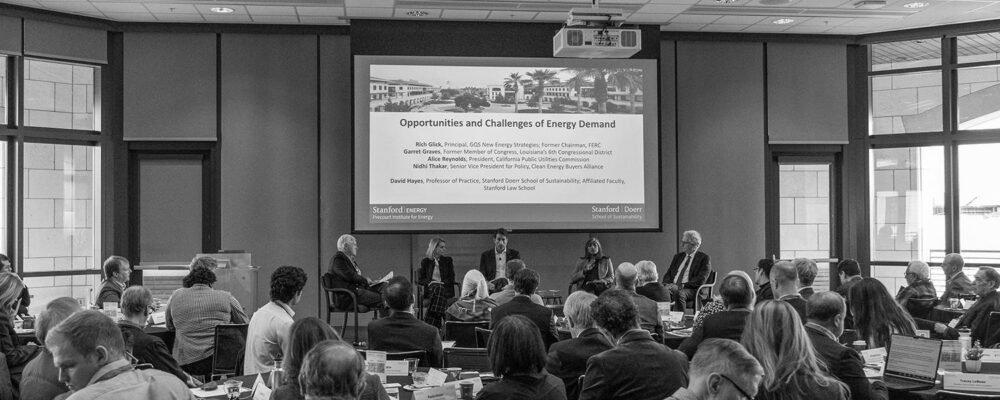The Colorado River, “the lifeblood of the West,” is in trouble. Decades of overuse and drought have sharply reduced its water supply, threatening an ecosystem that supports 40 million people and 5.5 million acres of farmland in nearby states and parts of northern Mexico.
Steep cutbacks in water use are critical. But the seven states that rely on the Colorado River can’t agree on how much less each of them needs to take over the long run, in large part because it’s not entirely clear who holds what legal rights to the river and who should get priority over others to its available water. If the states can’t agree, the federal government is reportedly threatening to make the hard choices for them.
Paul Milgrom, the Shirley R. and Leonard W. Ely, Jr. Professor in Humanities and Sciences in Stanford’s Department of Economics and a senior fellow at the Stanford Institute for Economic Policy Research (SIEPR), has encountered intractable problems like this before. In 2020, he won the Nobel Prize in Economic Sciences for his pioneering work creating markets for goods and services that can’t be sold in traditional ways.
Water management, he says, is ripe for a market fix — not just for the Colorado River Basin but around the world as water shortages, made worse by climate change, become a defining issue of the 21st century. It’s no longer enough to leave decisions around water use up to federal, state, and local governments alone.
“We are trying to meet a 21st century set of challenges with 20th century technology and 19th century laws,” says Milgrom, who is also a professor, by courtesy, at the Stanford Graduate School of Business (GSB) and at the Department of Management Science and Engineering in the School of Engineering. “What we have, fundamentally, is a market design problem.”
Milgrom is part of an interdisciplinary Stanford team — led by Billy Ferguson, a PhD student in economics at the GSB and a former SIEPR undergraduate research fellow — that has developed an elaborate plan for how new markets for trading water could overcome key policy challenges around water allocation while providing incentives to high-volume users to find ways to do more with less.
Milgrom and Ferguson recently highlighted their proposal in a working paper released by the National Bureau of Economic Research. Their use case is California, one of the Colorado River Basin’s biggest stakeholders and whose system for divvying up surface water, which comes from rivers and streams, is especially complex and opaque.
Much of their blueprint is drawn from Milgrom’s work a decade ago helping the Federal Communications Commission (FCC) overcome obstacles in delivering more radio wave frequencies to wireless companies so they could meet exploding consumer demand for mobile services.
Milgrom led a team of experts in economics and computer science through his company, Auctionomics, in the creation of a voluntary market for trading a new type of radio spectrum license, which is credited with enabling mobile communication as we know it, today. The two-part auction process he helped engineer so that the FCC could make those trades possible also delivered $20 billion in total to the radio and TV operators that gave up their old licenses and another $10 billion to the U.S. Treasury.
Milgrom says there are lessons from the 2017 Broadband Incentive Auction that apply to water scarcity in the United States and around the world.
Water rights are broken
As a second-year PhD student in 2021, Ferguson was already interested in water scarcity when he took Milgrom’s market design course and thought that lessons from the FCC’s broadband fix could apply to water. His class project on California’s convoluted system of water rights caught Milgrom’s attention and they started talking about working together. Ferguson then enrolled in a water law course taught by Barton “Buzz” Thompson, a Stanford Law School professor and water rights expert who had also been thinking about the potential role of markets. Thompson is also the faculty director of the Water in the West program led jointly by the Stanford Woods Institute for the Environment and the Bill Lane Center for the American West.
“Stanford University, officially Leland Stanford Junior University, is a private research university in Stanford, California. The campus occupies 8,180 acres, among the largest in the United States, and enrols over 17,000 students.”
Please visit the firm link to site






